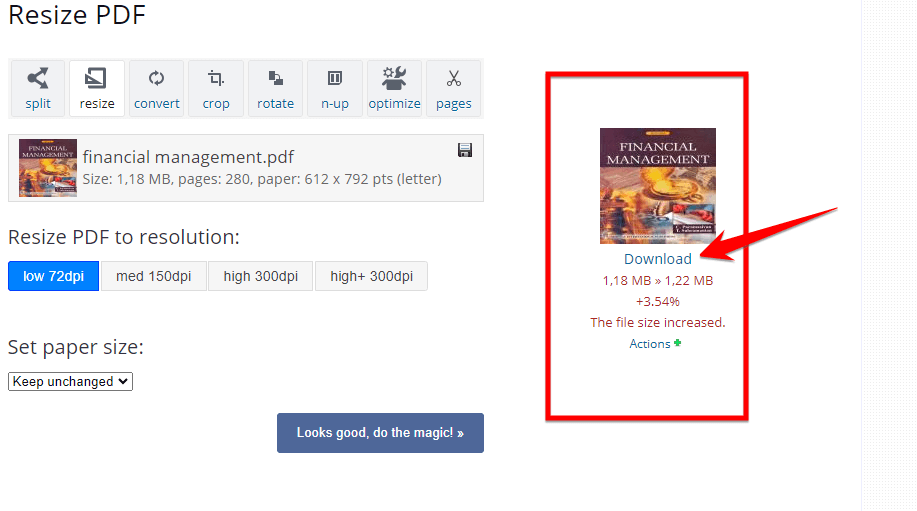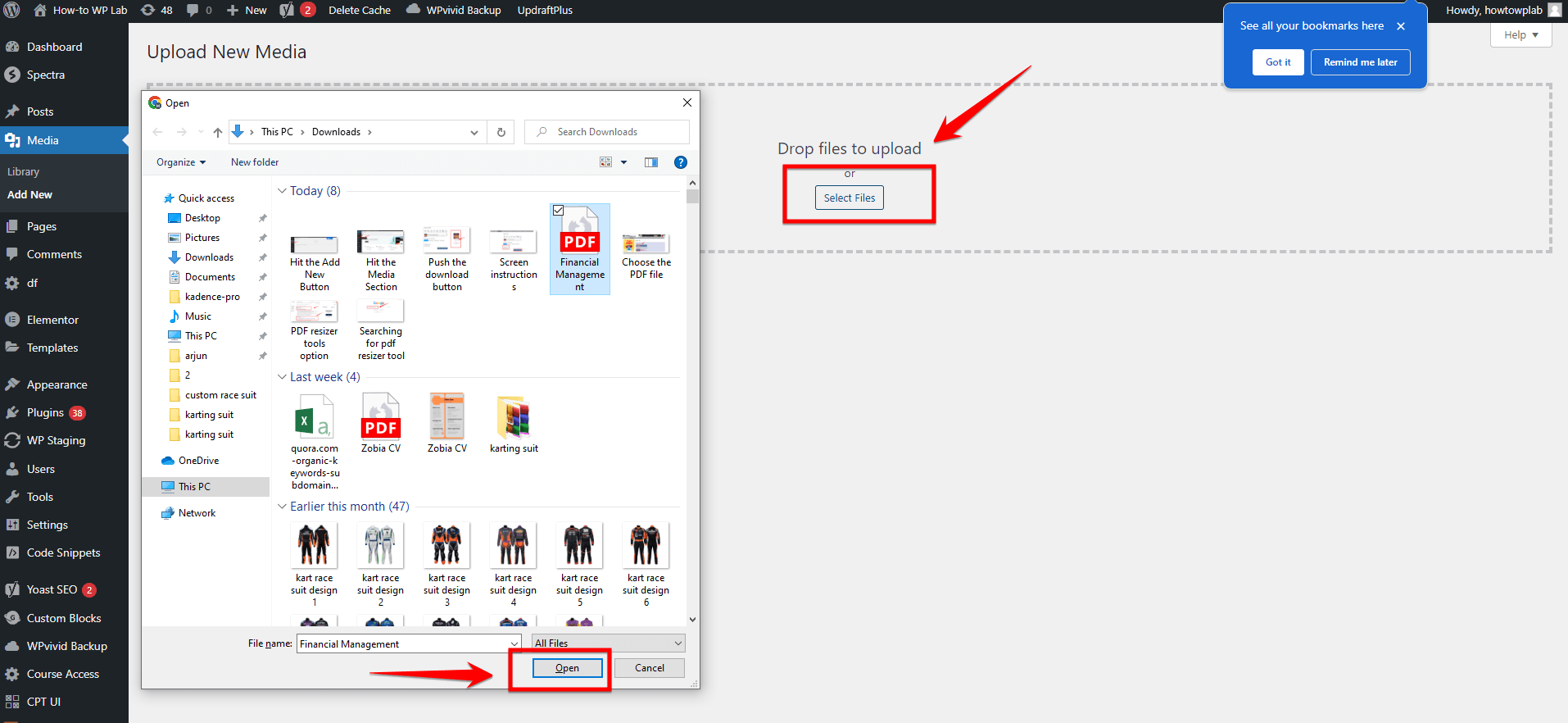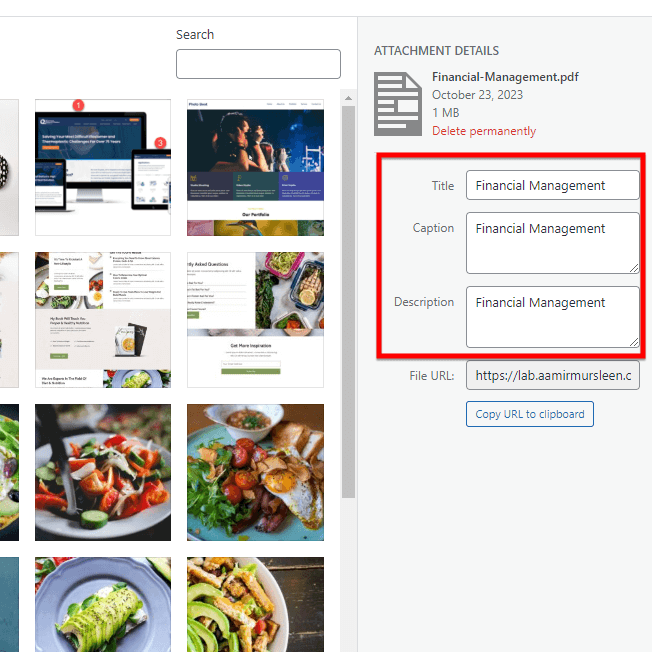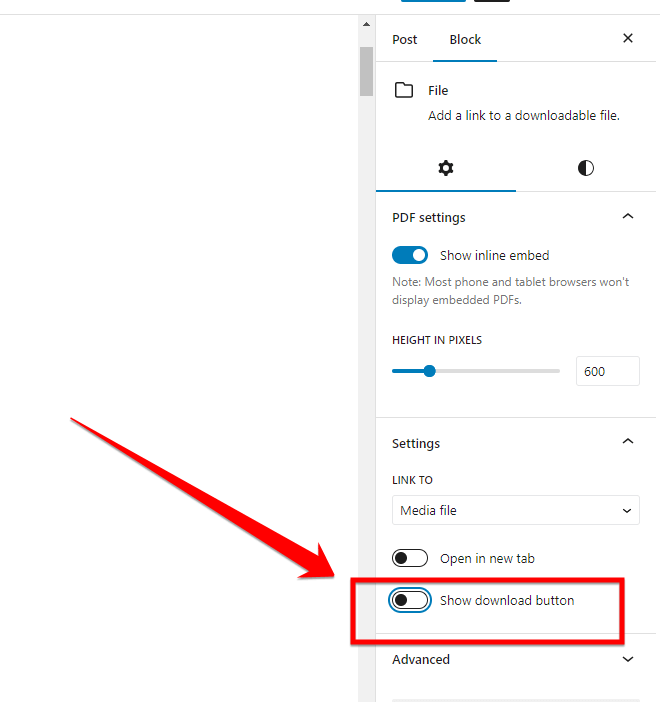
Muhammad Shakeel October 23, 2023 13 Min Read Affiliate Disclosure This blog may contain affiliate links. If you click on them and make a purchase, I may get a small commission, at no extra cost to you.

💡 Bonus Insight: And don’t worry if you run into any issues; I’ve got your back. Along with the guide, I’ll share some quick fixes for the most common problems people face when uploading PDFs to WordPress.
Now, let’s dive into the how-to part!
Table of Contents
For website owners who wish to share documents, brochures, e-books, and other resources with their visitors, uploading a PDF is a common practice.
Whether you’re aiming for accessibility, professionalism, or simply offering downloadable content, this step-by-step guide will walk you through the entire process.
Before you even begin with WordPress, it’s essential to have your PDF document ready for a seamless upload. Properly preparing your PDF not only ensures a better user experience but also facilitates easy integration onto your website.
A crucial preparation step is optimizing the file size for quicker load times. Here’s a simple guide to reducing your PDF file size using a free online tool:



Note: Ensure the selected website appears genuine and trustworthy, minimizing potential security threats.



To begin the journey of uploading a PDF to your WordPress site, you need to access your WordPress dashboard. This is where all the magic happens – where you create, edit, and maintain your website’s content and settings.
To log in, navigate to the admin login page and input your designated username and password. Once entered correctly, you’ll be granted access to manage and modify your website’s content and settings. Ensure you keep these login details secure to prevent unauthorized access.

If you want to access the dashboard of your WordPress website, it’s essential to log in to the website’s admin page. This dashboard is the control center of your site, where you can manage content, settings, and other functionalities.

Once you’re logged in, it’s time to find your way to the Media Library.
In your WordPress dashboard, locate and click on the “Media” tab on the left-hand side. This will take you to the Media Library, where you can manage all your media files, including images, videos, and PDFs.

The Media Library serves as a centralized repository for your website’s media files, making it easy to organize and access them when needed.
Now, it’s time to upload your PDF file to WordPress. In the Media Library, click the “Add New” button. This will open the media uploader.

Next, select the PDF file you want to upload from your computer by clicking the “Select Files” button. Once you’ve chosen the file, click “Open” to start the upload.

WordPress will display the upload progress, allowing you to monitor the process. Depending on the file size and your internet connection, this may take a moment
Now that your PDF is uploaded and properly labeled, you can insert it into a post or page on your WordPress site.








Before making your PDF accessible to your website visitors, it’s crucial to review your post or page. Preview it to ensure the PDF displays correctly and that the layout meets your expectations.
If everything looks good, click the “Publish” or “Update” button to make your post or page live on your website. Your PDF is now accessible to your audience.

After publishing your post or page, it’s a good practice to test the PDF link to ensure it opens correctly. Click on the link to the PDF to verify that it loads and is readable.

Testing ensures that your audience won’t encounter any issues when trying to access the PDF content.
Today, when content is king, how we present our content is just as important as the content itself. WordPress, being one of the most popular website platforms, offers versatility in how content is shared.
One of the often overlooked but highly effective ways is uploading PDF files. There are some stellar reasons for considering this method. Let’s dive into them.
We live in a world that’s always on the move. Sometimes, our users might not have the luxury of an active internet connection. By providing downloadable PDF content, you give them the freedom to access your content wherever and whenever they need it without relying on a steady web connection.
Take the example of a student preparing for an exam or a professional traveling to a remote location with limited connectivity. They can simply download the required reading material from your site and access it offline.
If you plan to share substantial and detailed content, such as manuals, guides, or academic papers, this is a huge advantage. By offering this flexibility, you’re not only improving the user experience but also expanding your content’s reach.
Branding is essential, and consistency is a significant part of branding. Unlike web pages that can sometimes render differently across browsers and devices, a PDF retains its format. It’s like offering a printed brochure but in a digital format.
Think about it. The design, layout, fonts, and images remain consistent no matter where the PDF is viewed. Whether your user is viewing it on a large desktop monitor in New York or a smartphone in Tokyo, the experience is consistent. This uniformity provides a touch of professionalism to your content, making your brand appear more trustworthy and reliable.
It’s also worth noting that creating a PDF, with its layout and design, can often be quicker and more straightforward than trying to replicate the same design on a webpage. For businesses or individuals who often produce reports, portfolios, or catalogs, converting these into PDFs and uploading them to WordPress is a time-efficient way to ensure a professional appearance.
Digital content, especially valuable or proprietary information, is always at risk of being copied, altered, or misused. By sharing your content as a PDF on WordPress, you’re adding an extra layer of protection.
When you host your own PDFs, you decide the rules. Who gets to see them? How can they access it? Do they need a password? Can they download it, or is it just for viewing? These are choices you can make.
WordPress offers various plugins that allow for more advanced control over your PDFs, such as watermarking, encryption, and restricted access.
Moreover, because PDFs are less prone to viruses and malware compared to other file formats, your users can trust the files they download from your site. In a digital era fraught with cybersecurity concerns, this peace of mind can significantly enhance your brand’s credibility.
WordPress is a fantastic platform that accommodates various media types, and PDFs are no exception. Uploading a PDF can seem straightforward, but there are several best practices you should keep in mind to ensure an optimal experience for both you and your users.
Here are some essential tips for making the most out of your PDF uploads.
Before you even think about uploading your PDFs to WordPress, it’s crucial to optimize them. This process involves compressing the files for faster load times and ensuring clear readability. In the previous section, I outlined detailed steps for resizing PDFs, complete with illustrative visuals to guide you through each stage, ensuring that your files are not bulky and are easy to download or view online.
The name of your PDF file matters more than you might think. It plays a pivotal role in improving SEO and aiding user understanding. A well-named file can inform users and search engine algorithms about the content of the PDF, improving its visibility in search results.
For instance, if your PDF is a guide on “how to install a WordPress plugin,” naming it “wordpress-plugin-installation-guide.pdf” is much more effective than a generic “file1.pdf.”
In the digital world, content can quickly become outdated. To keep your website visitors engaged and ensure that your content remains relevant and accurate, make a habit of reviewing and updating your PDFs regularly.
This practice is not just for the sake of the users but also for SEO. Updated content is a positive signal to search engines, indicating that your website is maintained and current, which can contribute to higher rankings in search results.
One of the challenges with PDFs is that users typically need to download the file to view it, which can be a bit cumbersome. However, by using a PDF viewer plugin, you can enhance the user experience by allowing in-browser viewing.
Such plugins enable users to view the PDF content directly on your web page, making the consumption of content faster and more user-friendly. The added benefit is that users are more likely to engage with the content and spend more time on your site, positively impacting your SEO.
Encountering issues while trying to upload or view PDFs on WordPress can be frustrating, but fear not! We’ve crafted a detailed guide to help you navigate and resolve the most common problems. Let’s dive into each issue and explore practical solutions.
1. PDF Not Uploading
Sometimes, you might face difficulties while trying to upload a PDF. Here are some steps to resolve this:
2. PDF Not Displaying
If the PDF doesn’t display after uploading, follow these steps:
3. Broken or Unresponsive Links
Broken links can affect the user experience. Here’s how to fix them:
4. Slow Loading PDFs
For PDFs that are loading slowly:
Great job on making it this far! You’veYou’ve now learned the steps to easily upload a PDF to your WordPress site. Remember, it’sit’s as simple as preparing your PDF, uploading it to the Media Library, and linking it to your post or page.
If any issues pop up, you’reyou’re fully equipped to tackle them head-on. A huge thank you for your time and effort. I believe in your ability to make the most out of your WordPress site. Each PDF you add will make your content richer and more informative.
Keep up the excellent work, and remember, every step you take is a leap toward a more engaging and resourceful website! Cheers to your success!
Logging into your WordPress dashboard is the first step. From there, on the left sidebar, you will see a variety of options. One of these is titled Media.
Upon clicking Media, you will be redirected to the Media Library, a space where all your uploaded files are stored. At the top of this page, there’s an Add New button. Clicking this opens a new window where you can either drag and drop your file or select it manually from your computer. Follow these steps:
Step 1: Click Add New
Step 2: Drag and drop your file or click Select Files to choose a document from your computer
Step 3: Wait for the upload to complete
Your document, be it an image, PDF, or other file type, is now stored in the Media Library and can be added to posts or pages as needed.
After a PDF is uploaded to WordPress, finding its URL is straightforward. Navigate to the Media Library in your WordPress dashboard. Here, you’ll see a collection of the media you’ve uploaded, including images, audio, and documents like PDFs.
Browse through the Media Library to locate the desired PDF. Clicking on it opens an attachment details window. In this window, information about the file is displayed, including its URL. This URL can be copied and used to share the PDF directly or be embedded into a webpage.
While the WordPress dashboard is user-friendly for uploading files, sometimes you might need to upload files directly to your server, especially for larger files or specific types of media. This is often done using an FTP (File Transfer Protocol) client.
First, you’ll need to install an FTP client like FileZilla. With this tool installed, connect to your server using the credentials provided by your hosting service. Navigate to the wp-content directory, where you’re free to upload files directly. Drag and drop your files from your computer to this directory on the server, and the upload process begins automatically.
With Elementor, adding a downloadable PDF becomes a breeze, enhancing the visual editing experience. Begin by opening the page or post where you want the PDF link to appear, then initiate the Elementor editor.
In the Elementor editor, a variety of widgets are available to customize your page. Drag the Button widget to your layout where you want the download link. Under the button settings, you’ll find a Link option. A dynamic tags icon next to this option leads to a dropdown where Media File can be selected.
A wrench icon appears next, opening the path to select your PDF from the Media Library. With the PDF selected, the button on your webpage now serves as a direct download link for the PDF when clicked by visitors.